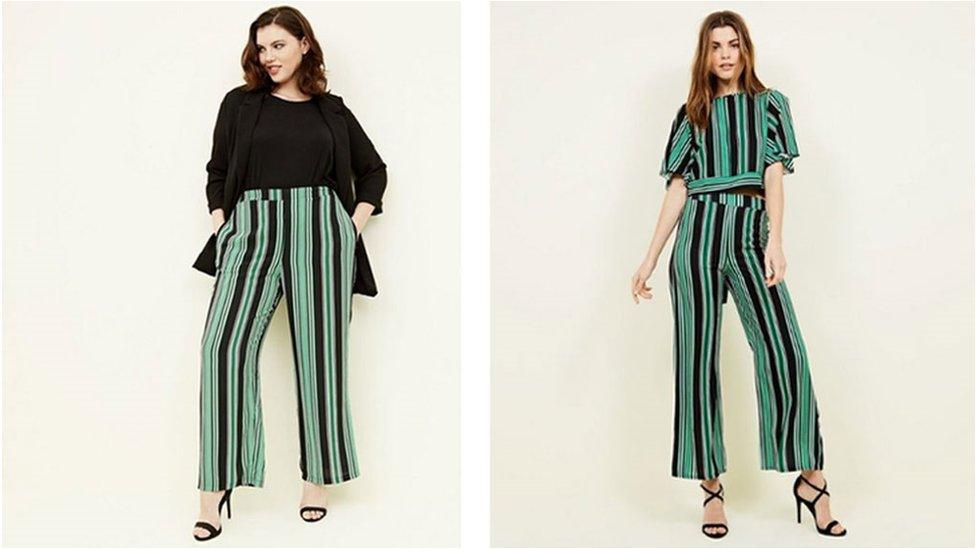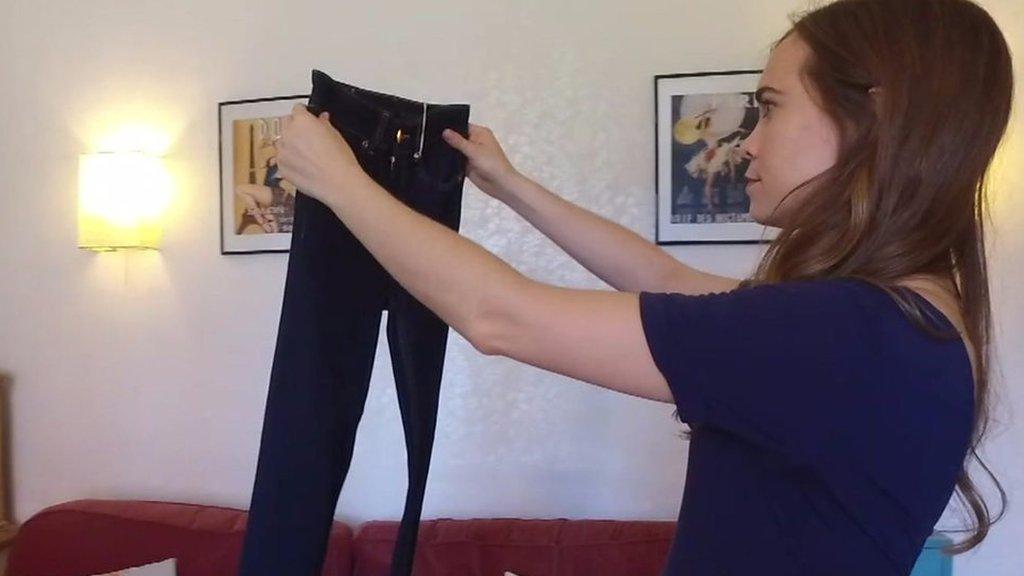H&M to make female clothes sizes bigger
- Published

Shopper Rebecca Parker criticised H&M for how its clothes were sized
H&M clothes sizes will become bigger following complaints from customers.
A spokesperson for the high street chain said: "We are taking the steps to change our womenswear measurements to be in line with UK sizing."
For example, the Swedish chain said the previous measurements and fit of a size 12 would now be the measurements of a size 10.
Many shoppers have previously complained that H&M sizes are too small.
In March, shopper Rebecca Parker wrote an open letter, external complaining that despite being a 12/14 she struggled to fit into size 14 jeans at H&M.

Rebecca Parker was "angry and frustrated" the size 14 jeans were not made for a size 14 woman
"Why is it OK for a brand to label an item of clothing as a size which it clearly isn't," she asked.
She pointed out that while H&M sold items emblazoned with phrases such as #GRLPOWER or SISTERHOOD the shop's sizing policy was the opposite of empowering women.
She said that, at the age of 25, she was "thoroughly content" with her body but wonders how her teenage self would have reacted.
As a 13-year-old, she writes, she felt "podgy and sad when I had to reach for a garment that was labelled with a number in the high teens".
Speaking to the BBC following H&M's announcement, she said she was "really thrilled" her "nagging" had paid off.
"I just hope they follow through," she added.
Size 8 fit model Megan Taylor investigates the sizes of jeans at different stores
Other customers had previously taken to Twitter to register their dissatisfaction with H&M's sizing.
Allow X content?
This article contains content provided by X. We ask for your permission before anything is loaded, as they may be using cookies and other technologies. You may want to read X’s cookie policy, external and privacy policy, external before accepting. To view this content choose ‘accept and continue’.

The story of sizing
Much of today's sizing originates from a survey of measurements carried out in the 1950s by a man named WFF Kelmsley, sponsored by the Joint Clothing Council.
Despite attempts to produce a standardized sizing system in the UK, no government has ever made it obligatory, says textiles expert Dr Vikki Haffenden from the University of Brighton.
However, the difficulty is that if there was a comprehensive sizing system to match every body shape, there would have to be at least 50 sizes.
"It would be too unwieldy," she says.
The concept of sizing is relatively new, she explains. Before the mass-production of clothes people would usually make or adjust their own clothes or take them to a tailor.
However, technology could soon make clothes sizes obsolete.
Dr Haffenden says that many companies are exploring ways of using body scanning to accurately measure a customer's body shape in order to produce a perfectly fitted garment.

- Published15 May 2018

- Published31 May 2017

- Published25 August 2017

- Published28 November 2015
